The V-1 “buzz bomb”: the world’s first cruise missile
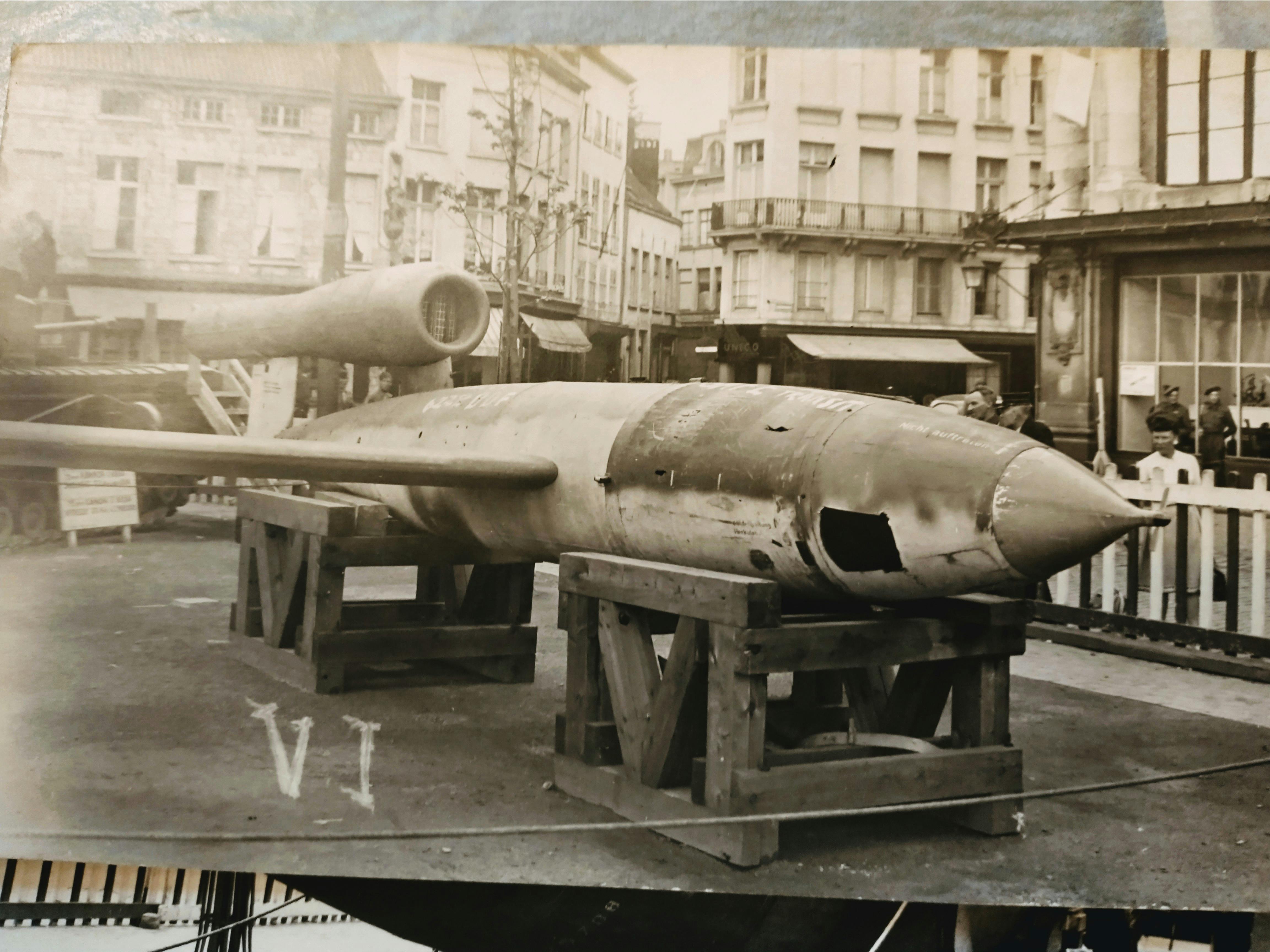
Blog
At 4:25 AM on June 13, 1944, a week after D-day, Londoners were awakened by a new and strange noise: the loud, distinctive “buzzing” noise or low-pitched hum of Hitler’s first “revenge weapon” (Vergeltungswaffe), the pulsejet-powered V-1 flying bomb, which had flown over the English Channel from occupied France carrying an 1,800-lb payload of high explosives.
Shortly after being spotted by the Royal Observer Corps, the missile went into a steep dive and hit a railway bridge in Bethnal Green, killing 6 people, destroying dozens of dwellings, and rendering hundreds homeless. For war-weary Brits who had survived the Battle of Britain, the London Blitz, and over 5 years of total war, this new, terrifying Nazi threat was potentially a huge blow to morale, not to mention the damage it caused and the lives it cost.
From a technological perspective, the V-1 was both amazingly primitive and incredibly advanced. Let’s go over the key points of this weapon, how it worked, and what effect the world’s first “guided cruise missile” had on the war effort and post-WWII weapons development.
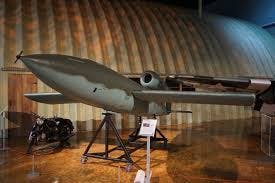
How did the V-1 flying bomb work?
Unlike today’s cruise missiles which have the accuracy capability to fly through a specific window of a target building and can fly up to 1,500 miles at speeds close to Mach 1 (and hypersonic cruise missiles are in development by all major world powers), the V-1, technically called the Fieseler Fi-103, was powered by a very rudimentary pulse-jet engine that ran on common 80-octane gasoline. Its top speed was around 415 mph, but it typically arrived over Britain at between 350 and 390 mph due to heat and mechanical degradation of its cheaply built pulsejet louvers. The Argus 109-014 engine only produced around 660 lbs of thrust, while the fully fueled and armed V-1 weighed over 4,900 lbs, which meant that its engine was inadequate to get the V-1 airborne from a dead stop. Instead, the flying bomb had to be helped into the air by steam-ram-powered launching ramps (similar to today’s aircraft-carrier catapult systems) or dropped from modified Heinkel bombers that were already traveling above the V-1’s very high stall speed of around 150 mph.
The first V-1s had a range of around 150 miles, but this was extended to 250 miles in the final versions. A pulsejet is the most basic jet engine, and once initially fired by a spark plug and a pressurized starting cart (in the case of the V-1) or an external flame source, it is self-sustaining, meaning that as long as fuel is being pumped into its intake and air is present, the engine will keep running.
A detailed explanation of how a pulsejet engine works is not practical here, but the concept is roughly similar to how a diesel engine self-detonates the fuel mixture once the engine is running: In a pulsejet, the final shockwave and portion of the flame of the previous explosion (or “pulse”) caused by the ignition of the fuel-air mixture in the combustion chamber ignites the next charge, which expands against one-way intake louvers near the front of the “tube,” shutting them, and pushing the exhaust out the open rear of the engine. This expansion then creates lower pressure in the combustion chamber, which draws air and vaporized fuel in through the louvers at the front of the engine, and the cycle repeats itself. This happens around 50 times per second, and is the source of the pulsejet’s distinctive, loud “buzzing” sound (heard up to 10 miles away) which earned the V-1 the nickname “buzz bomb” or “doodlebug” by the Brits.
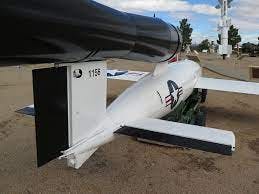
How did the V-1 buzz bomb find and hit its target?
It’s a common misconception that the V-1 was unguided or that it flew randomly toward England until it ran out of fuel, dropped out of the sky, and exploded. In reality, the trajectory of each V-1 was determined by its launch ramp, a magnetic compass contained in a spherical wooden housing near the nose (to help guard against metallic interference), and primary/secondary gyroscopes near the tail. If course deviations were sensed, signals were sent to compressed-air-driven servos that actuated rods connected to the rudder and stabilizers, which returned the bomb to its proper direction. Two spherical compressed air tanks also pressurized the fuel tank, and the fuel mixture was even automatically regulated based on altitude using an expanding, metal capsule that worked in concert with a pitot tube to restrict or enhance fuel flow depending on altitude.
Distance to a desired target was also set prior to launch by the use of mechanical dials, which counted down the distance to zero using a small propeller or “air log” at the nose of the V-1. When the dials reached zero, the counter initiated circuits that shut off the compressed air supply, fired a pair of explosive bolts near the horizontal stabilizers, extending spoilers that sent the bomb into a terminal dive, and locked the rudder and stabilizers.
The dial/distance system was also used to arm the two fuses for the explosive payload roughly 35-40 miles into its flight, to alleviate the danger of launching a fully armed bomb. Additionally, if the V-1 was a model equipped with a radio transmitter (not many were), it triggered the transmission of the aircraft’s radio so the Germans could track roughly where the bomb detonated. Another dial mechanism near the tail was used to set the desired altitude of the V-1’s flight (up to 10,000 feet, but typically between 2,000 and 4,000 feet). All of these systems were powered by a combination of compressed air and a 30v battery onboard.
The 1,800+ lbs high-explosive payload was detonated on impact via either the V-1s nose or belly switch (if the V-1 experienced a technical problem that caused it to land on its belly, the belly switch would detonate the bomb).
As the sharp dive was initiated, the fuel in the tank experienced negative G and the engine, starved of fuel, cut out and couldn't be restarted. Londoners and residents of Antwerp (during later V-1 bombing campaigns) soon learned to fear the silence following the “buzz” more than the buzz itself, because when the noise cut out, that meant the bomb was over its target area, the weapon had begun its terminal, steep dive toward the ground.
It must be said that this is astonishingly advanced technology for the 1940s. It may seem a little “steampunk” with hollow, wooden spheres housing the compass, wire-wrapped, cheap metal air-pressure tanks, and clunky mechanical “countdown” dials determining the arming and detonation distances of the explosives, but it can’t be denied that the concept of a cheaper, disposable weapon with similar capability to a manned bomber was sound, particularly for a Germany that was feeling intense shortages of materials, manpower, and fuel as a result of relentless Allied bombing missions deep into the fatherland. For any interested, The Air Zoo has created an excellent video on the technical aspects of the V-1.
At the height of the 3-month V-1 London bombing campaign during the summer of 1944, over 200 buzz bombs a day were launched at the city from sites across the English Channel in France, and even more were launched against Antwerp, Belgium later in the war.
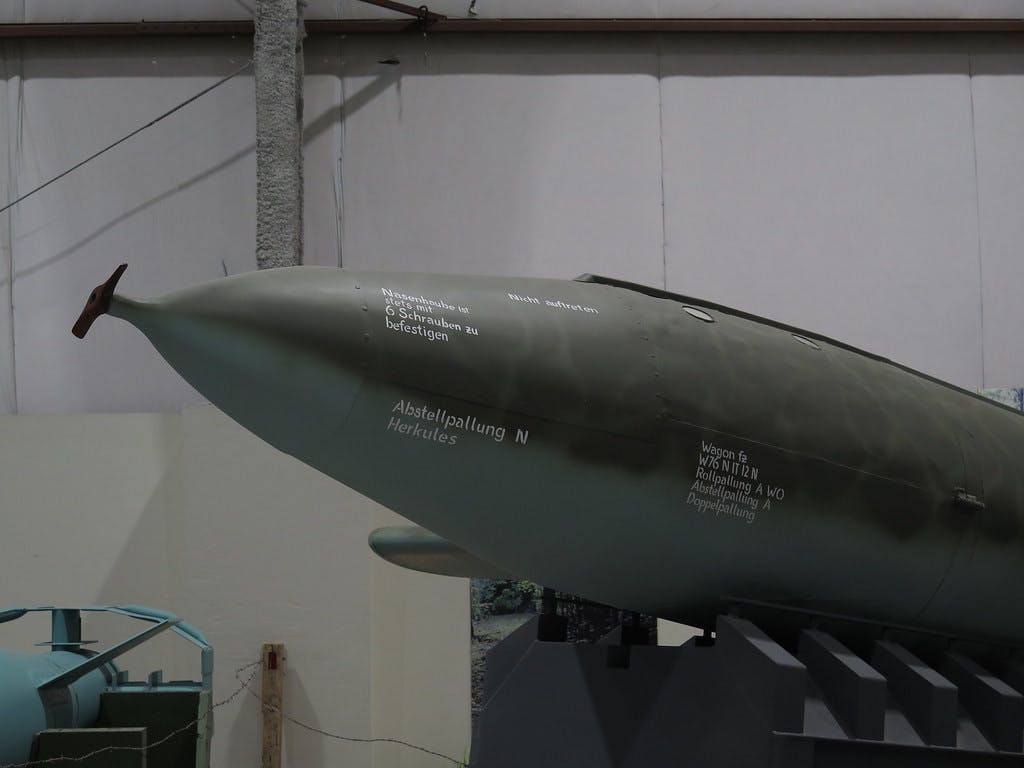
What was the impact of the V-1 on British morale and military effectiveness?
Hitler’s Germany had created this new generation of frightening weapons in an attempt to terrorize British civilians and undermine public and military morale. Nazi propaganda hailed the V-1 as a “wonder weapon” (Wunderwaffe) that might turn the tide of the war. But did it?
Certainly the V-1 (and the later V-2 guided rockets) had an impact on British morale. The 8,000+ V-1 strikes launched against London between June and September 1944 killed 5,500 people, injured 16,000, and forced the evacuation of more than a million. Some witnesses reported that the V-1 attacks were “the worst for morale” due to their random nature, the futuristic jet-powered, pilotless design, and the terrifying silence as the engine cut out and the bomb entered its terminal dive. One never knew where a V-1 was going to explode. Rumors of Hitler’s “robot planes” abounded. Overall, however, the V-1 was significantly less impactful than the Nazis predicted, for several reasons.
First, rather than be swayed by his advisors’ arguments that Germany use her new, advanced weapons to soften more practical military targets, Hitler was obsessed with terrorizing and targeting London itself. The primary target Hitler had chosen for his V-1 attacks was the Tower of London, but no V-1 ever came close. One buzz bomb hit a tree near Buckingham Palace and blew out some windows, but no “revenge weapon” managed to impact either of these high-profile targets.
However, Hitler’s mindless focus on terrorizing London turned out to be a good thing for the Allies. Der Führer’s stubborn directives created delays in V-1 development and prevented the buzz-bomb attacks from being directed at the staging and launching sites for the D-day invasions. Original plans were to launch the Nazi’s “revenge weapons” starting in 1943, but this became impossible due to faulty leadership and supply chain issues.
Furthermore, despite the relatively advanced guidance technology (for the time), Hitler’s buzz bombs proved to be even less precise than the unguided bombs dropped from the piston-engined bombers of the day. The actual precision accuracy potential of a V-1 was pretty broad. Winston Churchill said, “The average error of both weapons [the V-1 and V-2] amounted to more than 9.3 miles…. Even if the Germans had launched 120 weapons per day and had we not shot down any of them, their effect would not have exceeded the dropping of two or three one-ton bombs per square mile per week.” That may sound like a lot, but compared to a full-on Luftwaffe bombing campaign, the V-1s were a drop in the bucket.
Air and Space Forces magazine reports, “About 30,000 V-1s of all kinds were manufactured. Between June 1944 and March 1945, [and] almost 25,000 were launched against targets in England and Belgium. Of these, 7,000 managed to hit somewhere in England, with fewer than 4,000 landing in the greater London area.”
V-1 launches against Antwerp between October 1944 and March 1945 were intensive, with nearly 12,000 flying bombs launched at the vital port city. However, accuracy was even worse than during the London strikes, as only 211 buzz bombs ever fell into Antwerp proper. As more and more launch rails were captured or destroyed, the Nazis began launching more V-1s from modified He-111 bombers. However, either due to material failures or guidance issues, precision worsened still. In September 1944, half of the V-1s launched from airborne Heinkels missed London by 24 miles.
The imprecision of the V-1 was worsened further by British double agents, who sent back false reports to the Germans on where the buzz bombs struck. The Germans retargeted many of their V-1s with the result that the bombs were even less likely to fall on high-population areas.
One report says that of the 8,600 V-1s launched against London that summer, around 2,000 crashed on takeoff and more than half of the remainder were shot down by the British defenses (anti-aircraft batteries, fighters, and barrage balloons). Only a quarter of them struck anywhere in London. As the Allied forces expanded their hold on the coastal areas of France in late 1944 and early 1945, they captured and/or destroyed the V-1 launch sites, and the Germans began relocating remaining ones to eastern Germany for use against continental targets. The V-1 threat against London was finally over. The last buzz bomb launched from France on September 7, 1944. The V-1 had some effect on morale and generated a lot of, ahem, buzz… but had no real impact on the outcome of the war.
Beyond the strategic and technical mishandling of the V-1, the Germans paid a substantial “opportunity cost” for the V-weapons. Historian Richard Overy points out, “The resources that went to build them could… have produced an additional 24,000 aircraft.” This may be so, but by this stage of the war Germany had neither the trained manpower nor the air superiority to effectively field such a theoretical manned air force.
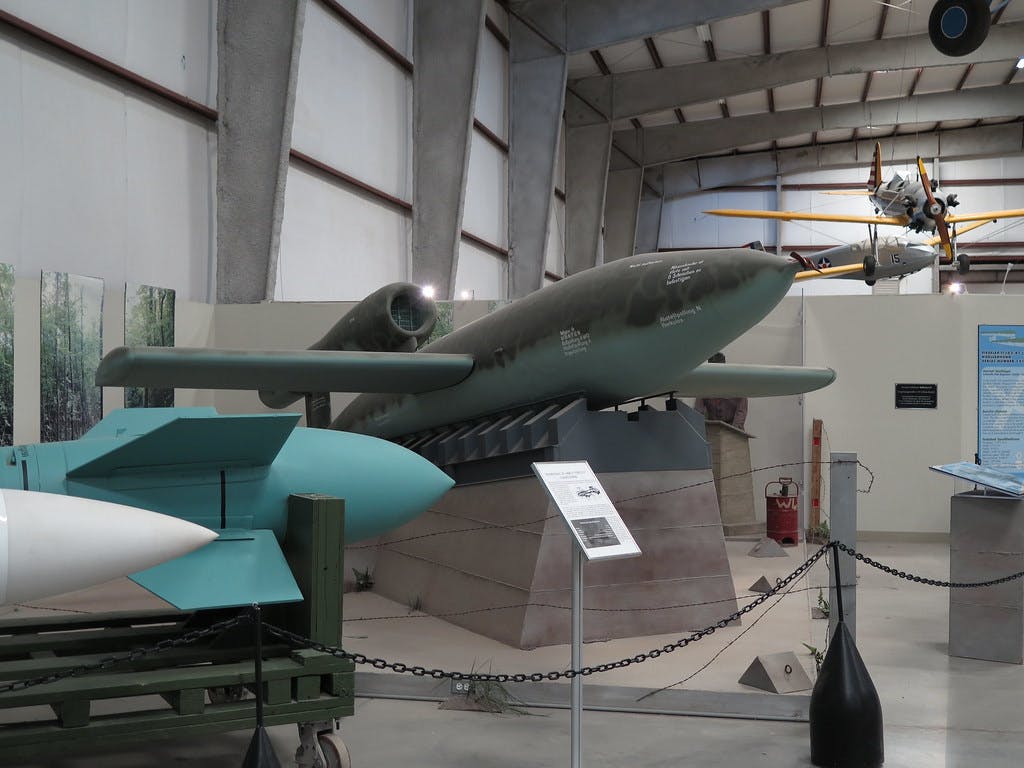
What effect did the V-1 have on aerospace and military technology?
Despite its brief operational history, the V-1’s legacy has been long. Even before the first V-1 attacks on London, Americans had reverse-engineered the design based on crashed and captured buzz bombs and created their own “jet-bomb” missiles, which were considered for use in the planned invasion of the Japanese mainland, but were never used during the war. However, the philosophical and technical legacy of the first cruise missile is profound. Air and Space Forces reports that Hanson Baldwin of The New York Times was among the first to recognize the legacy of the V-weapons. “The flying bomb will not win this war,” he wrote in August 1944. “And unless its cousin, the giant [V-2] rocket the Germans are preparing for use against London, has undreamed of potentialities, neither will the rocket. But both of them are weapons of the future. Both have had and will continue to have considerable effect upon military operations.”
Truer words were never spoken. Soon after WWII, the world entered the Space Age, and cruise missiles and ICBMs threatening thermonuclear war would be the stuff of global nightmares for decades to come.
–By Jeff Davis, Intergalactic Scribe
Sources:
https://www.airandspaceforces.com/article/hitlers-buzz-bombs/
http://www.warbirdsresourcegroup.org/LRG/v1.html
https://en.wikipedia.org/wiki/Cruise_missile